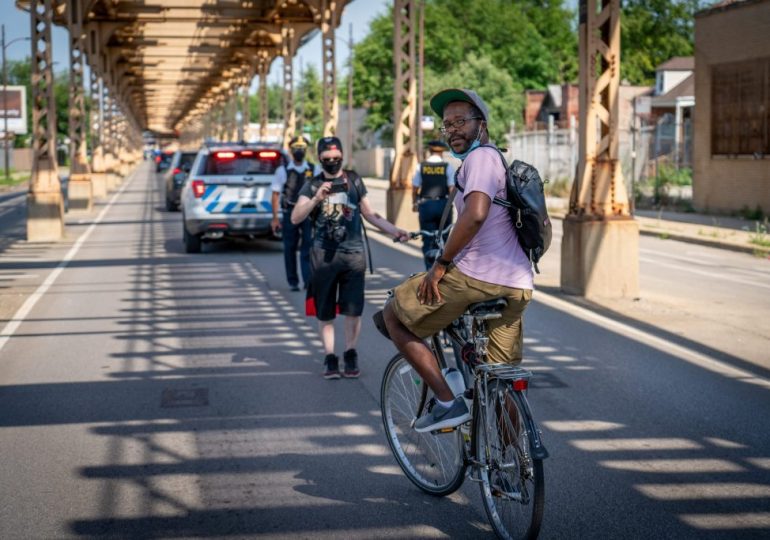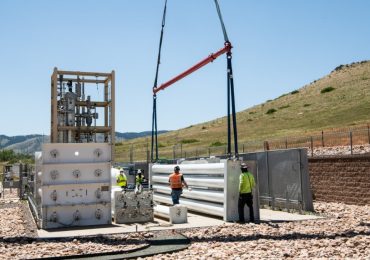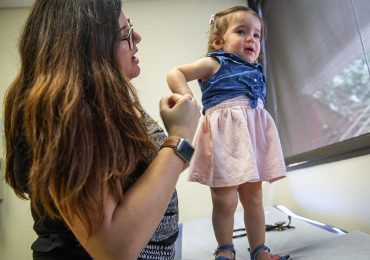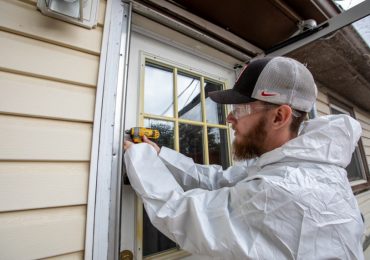Biking within Black and Brown communities is complicated.
While non-motorized transportation is an important tactic for reducing emissions, many people still associate biking with something that kids do — or think of it as the last resort for people who can’t afford cars.
In BIPOC communities, that is compounded by external factors such as perceived or realistic safety issues, police harassment, and lack of access and infrastructure due to decades of disinvestment.
Olatunji Oboi Reed, president and CEO of the Equiticity Racial Equity Movement in Chicago, aims to change that.
“There are some systemic barriers that keep Black and Brown people driving, that keep Black and Brown people driving by themselves, that push Black and Brown people away from transit or cycling or walking. So, we’ve got to think about this holistically and at the systemic level … some of the systemic barriers that keep us from getting rid of our cars,” Reed said.
Based in North Lawndale on Chicago’s West Side, Equiticity is a multifaceted, multi-racial organization focused on eliminating racial inequality. Reed, along with his staff and an active board of directors, guides the organization in its pursuit of racial justice — largely pedal-powered by bicycle.
For Reed and for Equiticity, getting more Black and Brown people on bikes is about more than recreation or even transportation. He sees it as a vehicle for enhanced community cohesion, economic development, and improved health outcomes for Black and Brown residents, whose life expectancy is a full decade lower than that of White residents of the city, in part due to poor air quality generated by fossil fuel combustion.
From Slow Roll to Equiticity
Reed, along with childhood friend Jamal Julien, launched Slow Roll Chicago — a local outpost of a global bicycle movement — in 2014 as a means of encouraging more Black, Brown and Indigenous people to embrace bicycling for both recreation and transportation. While Reed has stepped away from leadership, Slow Roll Chicago continues to work to strengthen community connections and development.
In 2017, Reed expanded his vision of promoting racial equity beyond Slow Roll Chicago with a well-attended soft open of Equiticity in Chicago’s tony River North neighborhood. A number of delegates from the National Association of City Transportation Officials conference, along with local advocates, supporters and members of the media, were in the audience. The new organization was initially tasked with a plan to establish bike libraries on the city’s predominantly Black and Brown South and West Sides.
Since then, the organization has expanded its programming reach while remaining firmly rooted within a framework of advocating for BIPOC communities. Today, Equiticity encompasses advocacy, social enterprises, and programming, along with “community mobility rituals” where Black, Brown and Indigenous people take to the road on two wheels.
Three of its major programs — the Mobility Opportunities Fund, GoHub Community Mobility Center and BikeForce Workforce Development Program — are specifically designed to make biking more accessible and affordable for Black and Brown riders by addressing inequities, disinvestment and disparities, along with promoting economic development.
The Mobility Opportunities Fund
In November 2022, Equiticity launched the Mobility Opportunities Fund, supported by a grant of $448,950 from ComEd. The fund initially provided $350 for the purchase of a conventional bicycle, $750 for the purchase of an electric bicycle, $1,500 for the purchase of an electric cargo bicycle and $3,500 for the purchase of an electric vehicle. (Stipends were later increased to $8,750 for EVs.)
Only four EVs were purchased using resources from the fund. However, community members bought 111 bikes, 85 electric bikes and 57 electric cargo bikes with their stipends, according to an August 2023 report on the program.
“When I came on board, I was very excited, because I understand being someone who resides in North Lawndale,” said Remel Terry, director of programs at Equiticity. “I understand the benefit of having alternative modes of transportation especially if you can’t afford a bike or even the cost of, as we’ve seen, gas and things of that nature.
“And then the overall climate-friendly aspect is also a big deal, in my opinion, and helping us to understand how to be more environmentally friendly without having to harp on things in the way sometimes it gets communicated.”
A community bike ride in Chicago’s North Lawndale neighborhood on August 15, 2020. Equiticity sees events like this as “software” that deepens social bonds while encouraging active transportation. Credit: Equiticity
The GoHub Community Mobility Center
Equiticity is developing the GoHub Community Mobility Center to help address EV charging deserts along with other mobility and transportation needs for residents of North Lawndale.
“The GoHub would have charging stations accessible to the community who may have electric vehicles,” Terry said. “So, it’s really like a one stop shop bringing all of the various programs into a physical space within the community of North Lawndale.”
But the GoHub is not limited to facilitating EV adaptation. Reed envisions multiple functions to address transportation-related inequities that Black and Brown low- and moderate-income residents experience, some of which may not be readily apparent.
That includes “hardware” — physical infrastructure — and “software,” which Reed describes as “the work we do to socialize people around the act of mobility.”
“For us, that’s our community mobility rituals. We do community bicycle rides, neighborhood walking tours, public transit excursions, group scooter rides, and open streets festivals,” Reed said.
“We also, as a part of the GoHub, want to have a hyper-local advocacy coalition. So, these are people at the neighborhood level who identify the needs to grow our mobility. And then we organize ourselves to move the stakeholders and policy makers in the city to bring the resources to bear that we need to grow our mobility in our neighborhoods,” Reed said.
North Lawndale suffers from a high crime rate, which is highly publicized in local and national media. In acknowledging the prevalence of violence in the neighborhood, Reed also envisions the “software” of the GoHub as a means to reduce the presence of violence that can discourage residents from biking.
“Violence in our neighborhood is not something that we are able to pontificate about often. It is pretty close to us. Trauma is driving our concerns around mobility. So, we want to address trauma.
“We want mental health services to be a significant part of our work in the GoHub… We want space in the GoHub where that space is dedicated to other forms of healing to help people move through their trauma and begin to consider other modes of travel that, heretofore, they weren’t focused on,” Reed said.
Workforce development
Equiticity launched BikeForce in 2022 as a workforce development program for teens between the ages of 15 and 19 living in North Lawndale and adjacent communities. The apprenticeship program focuses on the emerging electric transportation sector, through the mechanics of e-bicycle construction, along with electric vehicles, e-scooters, battery systems, and electric motors. The Cook County Justice Advisory Council awarded Equiticity a $600,000 grant earlier this year, which allowed the program to expand to serve 60 trainees over 18 months.
“BikeForce is providing these participants with comprehensive and targeted mentorship, career services and workforce training in an emerging, environmentally sustainable sector — all while increasing access to climate-friendly mobility devices in North Lawndale,” Terry said in an email.
The apprenticeship program also provides networking and opportunities for living-wage jobs to as many as 30 young people each year. Participants who complete the program also receive a cash stipend of $1,100 and a non-electric bicycle, Terry said.
“They’ll be able to leave this program and be hired as a bike mechanic somewhere with the experience of also understanding the battery aspect of the electric bike, which is a very big deal,” Terry told Streetsblog in September.
Ongoing advocacy
Equiticity launched the Free 2 Move Coalition during the summer of 2022 to advocate for improvements in biking infrastructure and policy changes, especially around the issue of police harassment of Black and Brown bike riders, including aggressive enforcement of street crossing regulations and prohibitions against riding on the sidewalk. These types of stops increased exponentially as an alternative to stop-and-frisk, saido Jose Manuel Almanza, director of movement and advocacy building at Equiticity.
“Right now, the Chicago Police Department can stop vehicles for a number of reasons, including a busted taillight, no registration or expired registration, [or] no city sticker — stuff that we think that should not be in the hands of the Chicago Police Department” Almanza said.
Equiticity’s research found that between 2014 and 2019, police disproportionately issued citations for bike riding on sidewalks on the West and South Sides, which are predominantly Black and Brown neighborhoods.
“At the same time, those areas have little to no biking infrastructure. So, it makes sense that people just feel safer riding on the sidewalk,” Almanza said. “So, we want to eliminate the CPD’s ability to ticket folks for these offenses, and at the same time invest in these neighborhoods to give them the space and the safety they need to ride their bike safely on the road.”
Like many Black and Brown communities, North Lawndale has suffered the effects of decades of disinvestment. However, dollars intended to mitigate disinvestment frequently don’t make their way to areas where they are most needed.
At the same time, initiatives to mitigate disparities are sometimes met with pushback — driven by mistrust and anxiety about displacement, and exacerbated by the failure of municipal and other entities to engage community stakeholders, Almanza said.
“We really want to expand biking infrastructure. However, a lot of people on the West Side and South Side see biking infrastructure as a sign of gentrification. A lot of people think, well, who are these bike lanes really for? It just seems that whenever the city does any kind of improvements in, for example, North Lawndale or Little Village, we get priced out. And I think just seeing that over and over and over again, it just creates suspicion in people that, well, in the past, everything they’ve done was not for me. So why is this for me now?
“Different communities in Chicago have different needs and people who live here know what’s needed, know what’s working, know what isn’t. However, we just keep seeing a lack of engagement from city agencies when it comes to creating a plan around infrastructure. A lot of our communities have been here for a very long time, so there’s a lot of history in it, and it seems like a lot of that history isn’t taken into consideration.” Almanza said.
For Reed, advocacy, education and improving biking infrastructure are all integral to Equiticity’s mission of getting Black and Brown people on bikes — and having them feel safe riding.
“How are we going to convince somebody not to drive and they should walk or bike, and there’s no sidewalk? This is not a rural community. This is the city of Chicago. People consider this the welcome center to the country,” Reed said.
“Corporations are headquartered here. And we’ve got a neighborhood in our city with no sidewalk. And it’s been like that for decades. “The intersection [at] 79th and Stony [Island] is one of the most dangerous intersections in the state of Illinois. It’s been like that for generations. And we’re supposed to convince somebody in that neighborhood to ride a bike. I wouldn’t dare tell somebody to ride a bike on Stony Island. I wouldn’t ride a bike on Stony Island. So, we’ve got to improve the quality of our infrastructure. We’ve got to use infrastructure to reduce all types of violence, interpersonal, police, and vehicular. And this is taking place.”
Black-led Chicago nonprofit sees cycling as a tool for building healthy communities is an article from Energy News Network, a nonprofit news service covering the clean energy transition. If you would like to support us please make a donation.
Leave a comment









